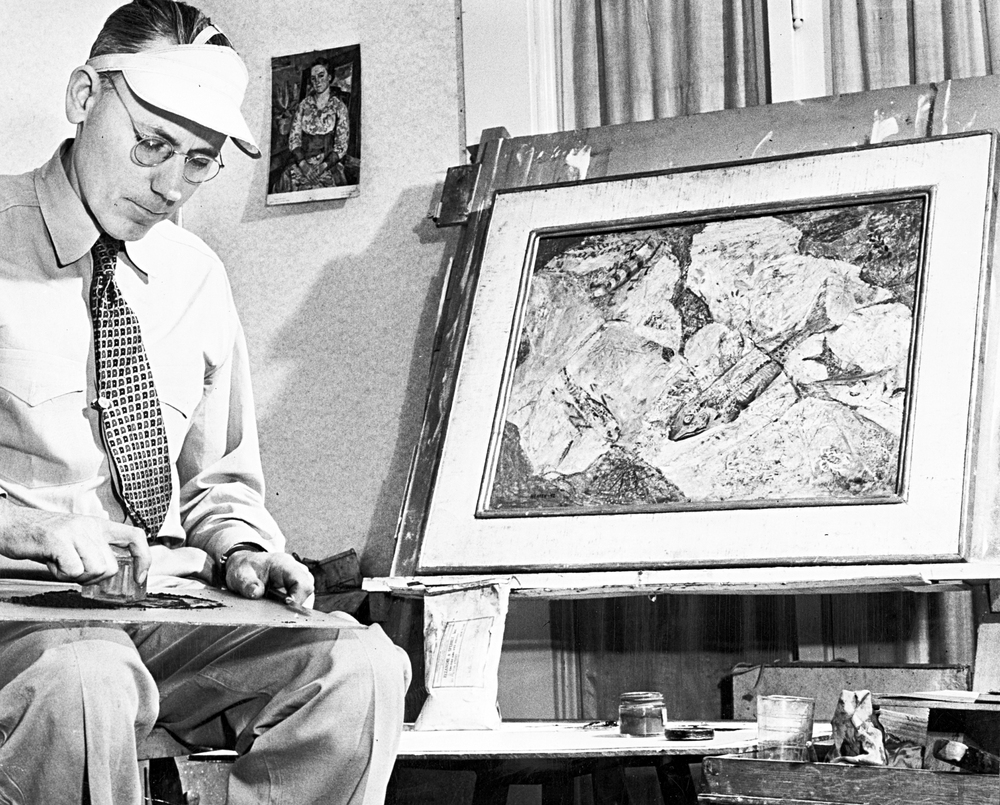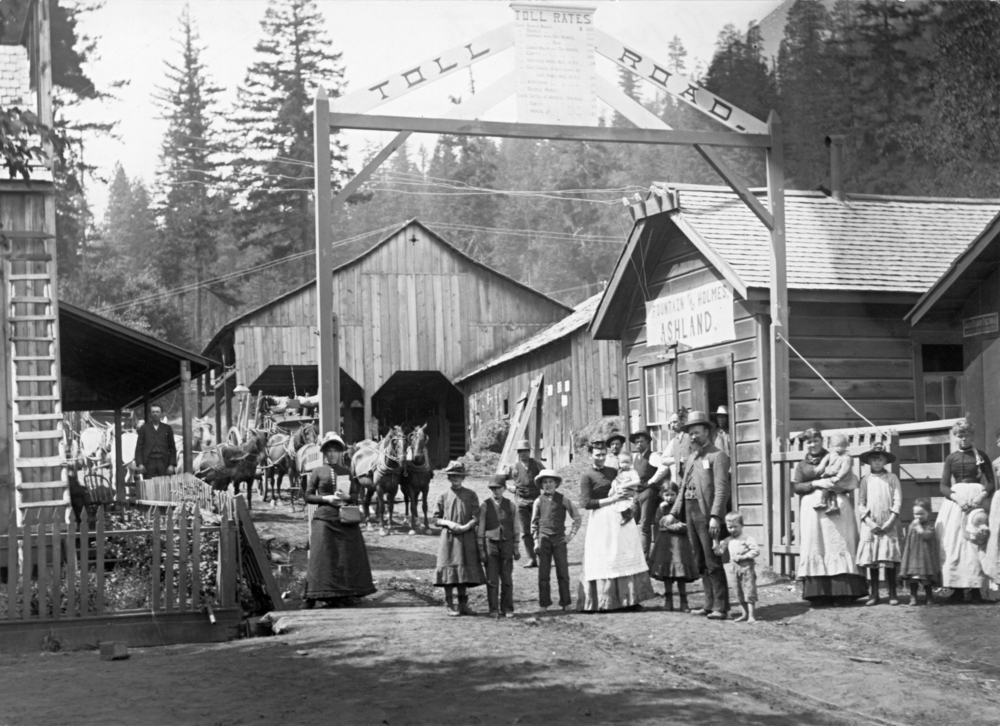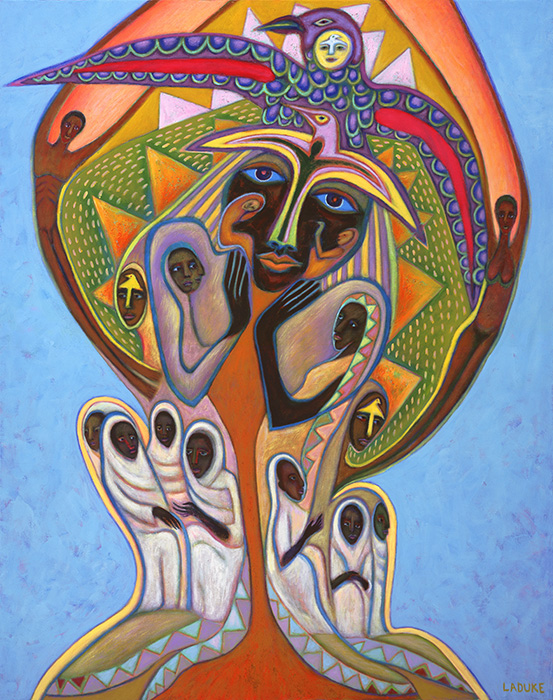Over the course of her ninety-eight years, artist Mary Perry Stone tirelessly combated war and injustice. Her weapons were the stroke of a paintbrush and the artful collision of color, creating art she hoped would “transcend [society’s idea of] the pretty to hit the soul.” In her long career, she produced sculptures, paintings, and over fifty murals.
It was in Oregon that she gained the inspiration to produce a large majority of her murals. In fact, while living in scenic Ashland, Stone produced such an abundant amount of artwork that she literally painted her way out of her bedroom and was confined to sleeping on the couch. Her daughter fondly reflects that her own husband is "the only man who has single handedly moved an entire art gallery."
Born in 1909, Mary Perry grew up in Rhode Island. At the age of fifteen, she enrolled in the Art Students League of New York City. She then finished high school in Rhode Island and returned to New York to attend the Traphagen School of Fashion and Design. Graduating at the beginning of the Great Depression, she was first trained as a sculptor and quickly evolved into a versatile painter, well versed in a variety of mediums. She later taught in New York’s Harlem and East Side amid producing a sizable body of work.
Stone believed that as an artist it was her obligation to create art that "says something about the world." She did so by showcasing the horrors brought on by war and prejudice, taking a stand that demands social change. Her work was exhibited at the Metropolitan Museum of Art, Carnegie Hall, New York University, and Rockefeller Center, and she was one of forty women sculptors on the New York City Federal Arts Project in 1937. After the eruption of World War II, the Federal Arts Project was discontinued, and many works of art were lost. Rumor has it that the missing works were pitched into New York's Eastside River. Tragically, none of Stone’s WPA works remain.
Following a 1946 marriage to Ed Stone, the couple had a daughter, Ramie, and moved to the San Francisco Bay Area in 1953. There she continued producing and showing her artwork and maintained her own galleries in San Rafael and Mill Valley, where artists could show for free. Her work was shown at Telegraph Hill, the Artists Cooperative, and the Oakland Museum, and she held a solo show at Dominican College in San Rafael.
In 1992, in pursuit of a more family-friendly environment, Stone moved to Ashland with her daughter. She remained active as an anti-war artist, and a retrospective of her work, History on the Wall: 60 Years of Protest in 2000, was exhibited at the Rogue Gallery and Art Center in Medford. In Oregon, her work also appeared in the Grants Pass Museum, Jega Gallery, the ArtSpace Gallery in Bay City, and the Southern Oregon University Thorndike Gallery.
Stone died in 2007, leaving her legacy in bursts of color and art that demands a peaceful call to action. Her papers are at the Smithsonian, the National Museum of Women in the Arts, and Sonoma State University.
-
![Photograph by her husband Ed Stone.]()
Mary Perry Stone working in direct plaster, Sausalito, CA, 1958.
Photograph by her husband Ed Stone. Courtesy Ramie Streng, Wikimedia Commons -
![]()
The Bowery, sculpted by Mary Perry Stone, 1939.
Courtesy Ramie Streng, Wikimedia Commons -
![]()
Mary Perry Stone, Comment on Vietnam. Oil on canvas, 1960s.
Courtesy Ramie Streng, Wikimedia Commons
Related Entries
-
![ArtSpace]()
ArtSpace
Established in 1989 on the site of a former market in Bay City, on Till…
-
![Ashland]()
Ashland
Ashland, a city of 21,360 people in Jackson County, is situated in the …
-
![Betty LaDuke (1933-)]()
Betty LaDuke (1933-)
Oregon artist and writer Betty LaDuke has gained an international reput…
-
![Southern Oregon University]()
Southern Oregon University
The origins of Southern Oregon University, situated on a leafy hillside…
Map This on the Oregon History WayFinder
The Oregon History Wayfinder is an interactive map that identifies significant places, people, and events in Oregon history.
Further Reading
Richard, Amy. "Artist Remains Feisty at Age 87." Eugene Register Guard April 16, 1997.
Streng, Ramie. "Mary Perry Stone (1909-2007)." The Arts Politic 1 (Summer 2009).
"Marry Perry Stone: A Life of Art." YouTube video. March 18, 2013.







